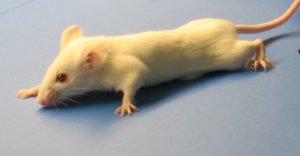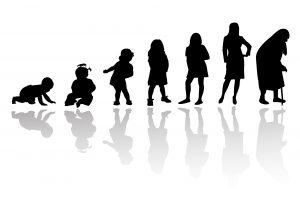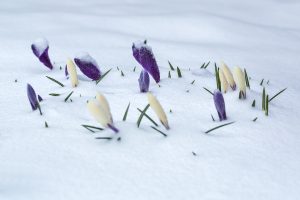Trauma Training Tip
Winter – a season for deep rest and thoughtful contemplation. Its organs are the Kidney and the Bladder. The Kidney’s emotion is fear. Its tissue is the bones. Its sense organ is the ears – it supports our capacity to hear even what we are afraid to hear. It also stores our genetic potential or essence (called the Jing in Chinese) and thus plays a critical role in the transformation of the impact of ancestral or inherited traumatic stress.
The Kidney provides the power for us to take action when the Adrenal Gland, which sits on top of the Kidney, signals the presence of danger or life threat. For some people, this sense of alarm becomes habituated with a nearly constant sense of fear. This excessive release of adrenalin plays a critical role in chronic illness. Swimming in fear is as destructive to our morbidity and mortality as a slow leak is in our basement.
Survivors who can tolerate touch will often benefit from a soft hand behind the Kidney and Adrenal Gland. Providers can invite the Kidney to feel safe, find comfort and have a soft landing with the intention in their hand. A survivor’s neurological system can “re-boot” out of constant arousal and into greater regulation. Providers may notice their client breathing more deeply, feel a deep pulse in the kidney as it softens and expands, and become aware of a sense of greater coherence moving through their tissues as the Kidney finds rest in their hand.
Alaine’s Two Cents
We have historically thought that genetic expression was fixed – it’s the hand we were dealt by our parents at conception. It turns out that various types of stressors can impact how genes are expressed – turning “on” or “off” various physical and mental health strengths and vulnerabilities.
“Epi”genetics – or the influence of factors “above” the gene is the study of how genes respond to both external or environmental factors – including the impact of traumatic stress on the autonomic nervous system. Such changes have been traced to the many health disparities found in survivors of the Middle Passage, the Trail of Tears, and the Holocaust.
Science Magazine recently reported on research using mice to explore the phenomenon of inheritance of epigenetic changes. They “tormented” mouse moms by separating them from their pups, confining them in tubes and dropping them in cold water.
Their pups had altered adult behavior and bio-chemistry. Their ”grand-pups,” as many as 7 generations later, also demonstrated disturbed behavior and biology.
However, just one generation at “Mouse Canyon Ranch” – an environment with running wheels, larger cages, and toys stimulating brain function resulted in pups without abnormal behavior or biology. One generation!
It would be a mistake to equate mouse biology with human biology – however this research does give us hope that when we help survivors restore their regulation and balance, that we are not only helping their life be easier – we may be supporting the health of children not yet born.
Check This Out!
Through the course of the year
summer’s power of growth
is exchanged
for winter’s earthly peace.
In the course of human life
the power of waking is exchanged
for sleep’s powerful presence.
In both sleeping and waking,
the spirit-filled soul lives on.
Thus, the Earth’s soul lives on spiritually
through the exchange of summer and winter.
– Rudolf Steiner
Wikipedia introduces us to Steiner as “an Austrian clairvoyant, philosopher, social reformer, architect, economist and estotericist.” He is the founder of the esoteric spiritual movement of anthroposophy.
Where is your clinical curiosity carrying you?
Send me a question or two and I will explore them with readers in this corner next month.
Q. Yesterday I had two clients who I used the Kidney/Adrenal hold with, alongside some basic acupuncture. One is new & was referred by his therapist for help with his extreme anxiety. The other was an “old” client whose recent life circumstances have pushed him into a highly aroused state. I suspect there may be some developmental trauma underneath his current state.
I’ve been thinking about the Self Protective Response and how in extreme fright, we will look first for Heart/Fire/connection to others to help us cope. For both these men I asked about their connections to others recently and offered encouragement to them to keep on reaching out.
In one case I explained this basic theory. In the other, I didn’t say as much.
What do you think as a clinical practice to encourage clients to reach out in their own world to get some Fire energy going after doing a Kidney hold?
I’m thinking not to necessarily talk about their trauma, but just to connect.
A. I like how you are thinking of creative ways to apply your deeper understanding of the Self Protective Response and the critical function of the Kidney/Heart axis.
As always, it’s an art form – some people, especially those who “live” in the Fire Element, will truly benefit from the encouragement to reach out and connect. Others could be intimidated or overwhelmed by the mere suggestion.
I think it’s almost always helpful to talk about the Kidney/Adrenal system as the signaling center for both safety and threat – and that we offer the Kidney/Adrenal hold to help re-boot that signal to give it more flexibility and insight – and thus a likely more accurate determination of “is it a snake or a rope?”. Some education helps with informed consent, and “buy-in” of this treatment on this day.
For some people the Kidney/Adrenal hold is not settling. When the sinking and settling of the Kidney invites the rest of the viscera to also sink and settle, it may feel terrifying. The braced state they are holding in their guts gives them a sense of safety, and letting go of this (actually false) sense of safety is very frightening. Some people may also feel terrified at the thought of looking in someone’s eyes, or reaching out in a social context. This is where the concept of pacing and titration of interventions comes in.
Keep exploring and being curious! We are building a beautiful community of healers who are learning and practicing together. Nice.



